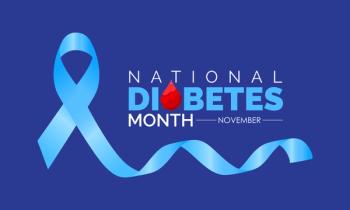
Aligning Pharmacy and Patient Goals Through Medically Integrated Dispensing
Christie Smith discusses a medically integrated dispensing model that aligns the goals of patients, physicians, and pharmacists.
Christie Smith, PharmD, vice president of Pharmacy and Payor Strategy at Cencora, explains how this model works by co-locating the pharmacy within the physician's office, allowing pharmacists to view medical records and collaborate with providers. Benefits highlighted include streamlined care coordination, prior authorization support, and improved side effect management. The partnership between Prime Therapeutics and AmerisourceBergen that developed this model is also summarized, noting how it required understanding each other's perspectives to align incentives for all parties. Overall, Smith promotes medically integrated dispensing as a way to enhance care through greater pharmacy integration within medical practices.
Q: What are some of the care models that are highlighted in the session, and how can pharmacies play an essential role in dispensing services?
Christie Smith: So the care model that we're demonstrating in this presentation talks about medically integrated dispensing. So if you think about just yourself going to a pharmacy to pick up a prescription it's a little bit different, in that pharmacy sits right inside of your physician practice, therefore, medically integrated. So you can literally leave the doctor's office, walk down the hall and pick up your prescription. Now there is value in that because the patient, the doctor, and the pharmacy are all aligned on common goals, the pharmacy is able to see the medical record at the same time they can see the pharmacy record because they have access to the EMR. That in and of itself sort of begs the difference between a regular pharmacy because we, as a pharmacist myself, we don't always have all the access to your diagnosis and the background.
Q: What is the importance of communication between payers, patients, providers, and pharmacists in these models?
Christie Smith: The medical landscape when it comes to patient care, by all the other entities, the provider, the plan, or insurance company, is a complicated landscape. So, typically, a patient has a medical pharmacy benefit through their employer, or if they're Medicare eligible, and so it really is up to the pharmacy and the provider to almost educate the patient on their plan, design, or benefits, and so when it comes to care as a patient, as we've all been a patient at some point, you really just want want the best care for yourself, and so oftentimes, what the provider may think is, first-line treatment for you may require additional justification or prior authorization. And that can be kind of frustrating for a patient, especially if you've just been given a very significant diagnosis like cancer. So our providers, especially our independent community providers, they are so passionate about their patients, and giving them the best treatment for their stage and where they are and wanting them to have real time access to their medicine as soon as possible, and so it takes a community, sometimes, to make sure all of those pieces are in place.
Q: How do these models help to leverage the relationship of managed care and specialty services to improve patient care?
Christie Smith: I have to tell you that this is probably not popular, a popular known belief, but in our model, that we partner with Prime Therapeutics, they outreach to us. The plan outreached to us AmerisourceBergen, now Cencora, to understand what medically integrated dispensing is all about. So, Cencora, formally AmerisourceBergen, we're the pioneers in standing up MIDs. So what happened was we there was a thought leader at prime that reached out to my thought leader, my boss, basically Lisa Harrison, and start to try to educate himself about the model. It was truly a growth experience for the plan as well as us as a distributor because we can tell them all about what it is but what you have to do in managed care pharmacy is you really have to understand the plan's perspective as well. I think that is why we have been so successful in this partnership because we were able to align on incentives, like our physicians have to be able to make money on the prescription because otherwise they have to close their doors, and in the same breath, on the flip side, the provider is providing such a great service to the patient. For example, in this model, if you were scheduled for a scan, due to your cancer, the pharmacist could see that in the EMR, so she's not going to do spits that $20,000 prescription until after those scale results come back to just ensure that the medication is working, and so that just goes to show you how we aligned from a player perspective because we're cognizant of health care dollars no matter where they're spent, and so that also, leads to side effect management, if you're having a lot of side effects, they'll be able to dose reduce, and there's nothing like an oncology pharmacy who's completely focused on all the guidelines NCCN guidelines first-line treatment. So the pharmacist is also going to be able to spend some time counseling that patient and their loved ones to help them navigate through such a complex disease state.
Newsletter
Stay informed on drug updates, treatment guidelines, and pharmacy practice trends—subscribe to Pharmacy Times for weekly clinical insights.


















































































































































































































